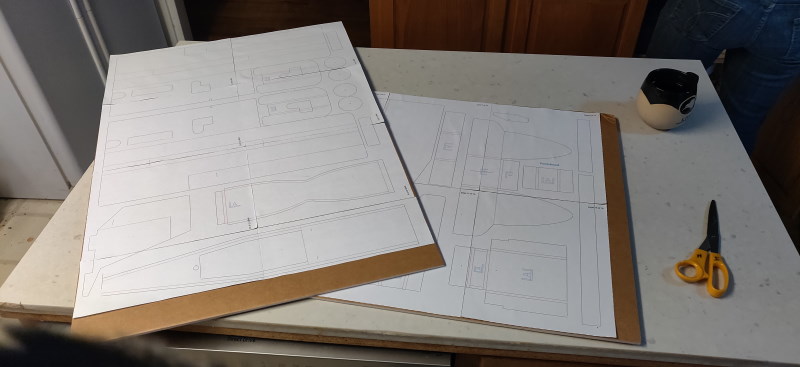OK, since
@Tench745 mentioned my build, I'll chime in with the things I learned on the Gotha design and build.
First, Do not be concerned with the lift of a short-chord wing. These WWI era bombers were designed for maximum lift. On top of the long span, you have TWO main wings here. There is plenty of lifting area. I used the undercambered tip FT design as a means to help stabilize the airplane and it does work and I would recommend it.
Second, The tail design should consider a few things. If you want it to fly more scale, keep the scale outline. Again, these airplanes were originally designed to be stable... but really only in a straight line. ANY WWI era bomber will not be a bank-and-yank kind of airplane. Because it is short nose-coupled, the tail will always act like a fulcrum and the wide span will not want to roll fast unless you way oversize the ailerons. So, my advice is to consider your own pilot skills. If you are not yet comfortable using a rudder to make your turns this one will want to make WIDE turns and generally fall in altitude on those turns, unless you way oversize the tail to about 60% over the scale size.
Third, Because of the wide span and short chord, focus on your spar design. The Gotha really needed the spar to be beefed up. The prototype had VERY floppy wings. I had to use fiberglass and epoxy on the foam spars in addition to the paint sticks where the wing outer sections met. Granted it was a 1/12 scale model at just over 77" span but I've read far too many stories of folks pushing their FT Storch too far (another example of short chord wide span) and the wings gave applause mid-air. Ply could be used but at the great expense of weight.
Fourth, do not, I repeat, DO NOT use the tail incidence of the 3-view. The reason is that the majority of the 3-views of these bombers keep the H-stab in-plane with the downward taper of the fuselage. CHECK IT against the datum of the fuselage AND the incidence of the wing. Try to keep it neutral or ever so slightly negative (leading edge slightly lower than the trailing edge).
Fifth, use the guy wires. The large wings will want to twist on each other. Reference how I did this on my Gotha. It provided an immense amount of rigidity that otherwise would have been absent.
There are many more notes I can give on flying WWI planes in general as they are not typical aircraft. Mostly, they need to be flown all.the.time. Mainly on landing. They need to be flown into the ground when landing as the short nose generally makes them want to nose-over. Notice on the Gotha how I hinged the nose for the battery. This served as a means to easily replace the nose but also provide a weak point to give when the nose came over so the plane would not entirely flip.
Lastly, I want to say that building a WWI airplane is probably one of THE most rewarding flight experiences. They just have a look and presence that other eras cannot match. It is soooooo much fun and rewarding to do so.









